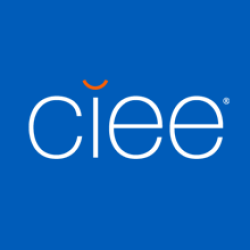Online Hybrid Course Enhances Global Internship Program
By Alexandra Wood
CIEE’s Global Internship program offers personalized placement that matches each individual student to a work experience based upon his or her educational background and career goals. A central part of the program is the required 6-credit Academic Internship course, which provides a framework for professional, cultural, academic, and personal development. In the past this course was taught on site, but after a successful pilot program, CIEE will now be delivering the Academic Internship course via a hybrid format (online and in-person).
The hybrid presentation of the Academic Internship course is just one part of CIEE’s overall digital strategy and our plans to ultimately add a layer of online support to all facets of a student’s study abroad experience.
There are many advantages of having an online component to the Academic Internship course. It enables students to fit learning into different time zones and busy schedules. But most importantly, offering students in 12 cities and 10 countries a shared, online academic framework to compare and contrast experiences allows us to build a truly global cohort.
How the online hybrid course works
Having an academic component to our Global Internship program allows students to meet student aid and credit requirements. Our pedagogical approach draws on experiential learning theory, which posits that providing students with ample opportunities for guided reflection steers meaningful learning.
The majority of coursework delivery is online in a “flipped” format. Students watch prerecorded lectures, do assigned readings, and respond asynchronously to discussion prompts that encourage intentional reflection. Weekly themes include navigating cultures, resilience, and interpersonal engagement.
Discussions are also conducted online in peer coaching groups, typically consisting of four students who are each doing internships in a different location. The diversity of student experiences adds to cross-cultural learning and comparative thinking about business culture and industry trends.
There is also intentional incorporation of local activities and meetings such as guest lectures or thematic site visits allowing students to learn more about their host country’s economic outlook or business culture.
By the end of the course, students complete a video storytelling capstone project that is a reflection on their internship experience and how they plan to apply the skills they have developed in their future academic and professional environments.
Benefits of a hybrid model
By comparing what they’re experiencing with their peers in another cultural context, students have the chance to compare interpersonal interactions in different cultures and analyze how culture influences organizational behavior.
The activities that require students in different locations to work together in teams provide opportunity to develop for skills related to managing virtual work – a particularly beneficial learning experience given the central role of communications technology in the global workplace.
CIEE’s online learning strategy
Not only does the hybrid presentation of the Academic Internship course help us ensure our Global Internships are real engines for professional development and career growth, it also ties to CIEE’s bigger strategy around online learning. It is built upon the work we have been doing developing online predeparture orientations using the Canvas Learning Management System. Our ultimate goal is to create a holistic platform that offers online support to students throughout the whole cycle of their study abroad experience, from supporting students as they prepare to travel abroad, to facilitating access to peers and coursework, to helping students translate their international experience into tools they’ll use upon returning home.

